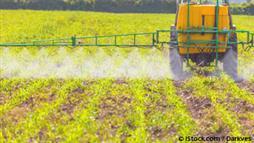By Dr. Mercola
The vaccine industry, public health organizations and many media outlets parroting the pre-established talking points insist that the science on vaccines is settled: Vaccines are safe and the childhood vaccination schedule is scientifically sound. End of story. According to some, the matter is so settled that anyone questioning the data or pointing out inconsistencies and/or research showing harm should be executed as punishment for “lying.”
This despicable call for violence came from editorial staff at the Boston Herald. The whole nasty mess started with a measles outbreak in Minnesota, the blame for which has been placed on a large Somali community where vaccination rates have declined in recent years due to parents’ concerns about vaccine safety.
Measles Outbreak Blamed on Unvaccinated Somalis
According to reports, of the 51 documented measles cases in Minnesota, 47 were unvaccinated; 46 were Somali. In all, only 42 percent of the Somali population in Minnesota received the
measles-
mumps-rubella (MMR) vaccine in 2014, down from 87 percent in 2005 and 2006.
The reason for the decline in
MMR vaccination is easy enough to understand. Research has demonstrated that Americans of Somali descent have nearly double the rate of autism than the general public, and personal experiences with their children’s health deteriorating after vaccination have raised serious questions and suspicions in the Somali community that the MMR vaccine might play a role. As reported by Inquisitr:
1
“In 2013, a report from the University of Minnesota estimated that about [1] in 32 Somali children ages [7] through [9] … had been diagnosed with autism in 2010 …
The lack of vaccination in the Somali community in Minnesota led to a report in [The] Journal of the American Board of Family Medicine.2 That paper indicated that most parents in the Somali community refused vaccines because they believed that vaccines caused autism.
When asked why they felt that vaccines cause autism, every single one of the parents reported that they feel that vaccines cause autism ‘because they knew a child who received the MMR vaccine and then got autism.’ One-fifth of the Somali Minnesotan parents had researched the topic themselves ‘and believed that science supports the connection’ between autism and vaccines.”
Boston Herald Takes Cyberbullying to a Whole New Level
In what has been called a “scalding anti-anti-vax op-ed,”
3 the Boston Herald’s May 8 report on the Minnesota measles outbreak concluded with the following statement:
4
“These are the facts: Vaccines don’t cause autism. Measles can kill. And lying to vulnerable people about the health and safety of their children ought to be a hanging offense.”
This obnoxious paragraph led to hundreds of angry comments, at least one of which pointed out the hanging threat was an open violation of Massachusetts’ 2014 law against cyberbullying.
5,6 Others rightfully suggested that if lying to the public about health was a hanging offense, then many high-ranking health officials, researchers and drug manufacturers would earn a place at the front of the line.
7
As extreme as the Boston Herald’s comment is, it’s not the first time mandatory vaccination proponents have made callous calls for violent action against those questioning vaccine safety. As noted by The Vaccine Reaction, published by the National Vaccine Information Center (NVIC):
8
“In March … Scientific American published an article by Peter Hotez, M.D,. of Texas Children’s Hospital, also inciting violence against people who do not agree with current government vaccine policies. Dr. Hotez stated: ‘An American antivaccine movement is building and we need to take steps now to snuff it out.’
In 2015, USA Today published a column by Alex Berezow advocating that ‘anti-vax’ parents should be imprisoned. At the time, that seemed to be a draconian proposal, but certainly less so compared to today’s calls for execution.”
Claims of Coincidence No Longer Hold Water
Vaccine injuries are becoming like cancer — the prevalence is so high, most people know someone who has suffered a serious side effect from a vaccine. And, as vaccine injuries multiply, claims of "coincidence" are getting increasingly harder to swallow.
This is precisely what we’re seeing among Minnesota’s Somali community, where many now reject the MMR vaccine based on the community’s firsthand experiences. Another example is Mississippi. It has one of the highest vaccination rates in the U.S. It also has one of the highest
autism rates.
9 Another coincidence?
In the absence of firm proof either way, many parents call for the legal right to make voluntary decisions about which vaccines their child should receive and if or when they should be given. Indeed, being able to exercise informed consent to medical risk-taking, including making voluntary decisions about vaccination, is one of the most basic human rights we have.
The numbers of children suffering with chronic illness and disability, including autism spectrum disorders, are increasing. Of this there is no doubt. The numbers of children and adults who have experienced serious vaccine reactions are also increasing. Of this there is no doubt either.
Boston Herald, Retract Your Hate Speech
To simply turn a blind eye to these phenomena would be foolish in the extreme. Threatening violence in an effort to scare people away from looking at the possible links, if anything, should be deemed a criminal offense. Barbara Loe Fisher, president and co-founder of the NVIC, has warned for many years:
“If the State can tag, track down and force individuals to be injected with biologicals of known and unknown toxicity today, then there will be no limit on which individual freedoms the state can take away in the name of the greater good tomorrow.”
Considering we’re now seeing rhetoric calling for the killing of anyone advocating for safer vaccines, more humane vaccine policies and informed consent protections, it seems reasonable to say we’ve entered some very frightening territory. If leading news outlets are allowed to call for lethal action against people accused of “lying” about vaccines when they are more likely simply reporting facts and raising concerns that contradict the official rhetoric, then what comes next?
Most states don’t even allow capital punishment for mass murderers, yet Boston Herald editors want to hang people for bringing up the possibility that vaccines might do harm?! I join neurodevelopment disorder researcher James Lyons-Weiler,
10 author of “The Environmental and Genetic Causes of Autism,” in calling for the Herald to retract the editorial and issue an apology for its inflammatory comments. This kind of hate speech cannot be tolerated.
Fact on Legal Record: Vaccines Are Unavoidably Unsafe
In 1986, Congress passed the National Childhood Vaccine Injury Act, a law that includes provisions shielding vaccine manufacturers and doctors from liability when a vaccine causes a permanent disability or death.
11
The reason drug makers and doctors were granted wholesale immunity against liability was because Congress and the Supreme Court concluded that government licensed vaccines are “unavoidably unsafe,”
12 and vaccine makers therefore should not be held liable for vaccine injuries and deaths resulting from government mandated vaccines.
Remember that Supreme Court ruling whenever drug industry bobbleheads insist that the science is settled and vaccines are “safe.” Government licensed vaccines have been declared unavoidably unsafe, and that’s a matter of legal record.
13,14 More importantly, the science is still wide-open with regard to whether or not vaccines cause autism.
Recent Research Reopens Vaccine-Autism Question
A paper
15 published in the peer-reviewed, open-access Journal of Translational Science on April 24, 2017, is a cross-sectional study of 6- to 12-year-olds exploring the association between preterm birth, vaccination and neurodevelopmental disorders, using data from both vaccinated and unvaccinated populations.
Preemies receive the same vaccines and number of doses recommended by the federal childhood vaccination schedule as full-term babies, and on the same time schedule, and the impact of vaccines on preemies has never been evaluated. Premature birth is a well-known risk factor for neurodevelopmental problems. However, here they found that when premature infants were not vaccinated, the association between preterm birth and neurodevelopmental disorders was nonexistent. They also found that:
- Term birth with vaccination was associated with a 2.7-fold increase in the odds of neurodevelopmental disorders compared to unvaccinated full-term babies
- Preterm birth with vaccination was associated with a 5.4-fold increase in the odds of neurodevelopmental disorders compared to the odds of neurodevelopmental disorders given term birth and vaccination
- Preterm birth with vaccination was associated with a 12.3-fold increased odds of neurodevelopmental disorders compared to preterm birth without vaccination
So, is the science truly settled when one of the first studies of its kind — one that actually compares vaccinated versus unvaccinated populations —finds vaccination increases a child’s odds of a neurodevelopmental disorder such as autism by 270 percent?
I’m not saying “vaccines cause autism.” I’m saying it’s unscientific to say “vaccines don’t cause autism.” Overwhelmingly, the evidence tells us that scientists still do not know for sure either way — which is why we so desperately need more and better quality research. In the meantime, death threats for reporting on and investigating these controversies are what really needs to be “snuffed out.”
More Research Questioning Vaccine Efficacy
I recently interviewed Neil Miller, medical research journalist, on his outstanding book “Miller’s Review of Critical Vaccine Studies: 400 Important Scientific Papers Summarized for Parents and Researchers.” His book has two studies that he personally published that document serious concerns about vaccines.
Our fascinating interview will be posted later this year but in the meantime, I wanted to share the highlights of the interview by mentioning the two studies Miller published.
The U.S. requires infants to receive 26 vaccine doses, the most in the world, yet 33 nations have better infant mortality rates. His first study, published in 2011,
16 analyzed the vaccination schedules of 34 developed nations and found a significant correlation between infant mortality rates and the number of vaccine doses infants receive.
Nations that require the most vaccines tend to have the worst infant mortality rates. The study found that developed nations that require the least number of infant vaccines tend to have the best infant mortality rates.
His second study, published in 2012,
17 analyzed 38,801 reports in the Vaccine Adverse Event Reporting System (VAERS) of infants who had adverse events after receiving vaccinations. Infants who received the most vaccines concurrently were significantly more likely to be hospitalized or die, compared to infants who received fewer vaccines concurrently.
This study was designed to determine a) whether infants who receive several vaccines simultaneously rather than fewer are more likely to be hospitalized or die, and b) whether younger infants are more likely than older infants to be hospitalized or die after receiving vaccines.
Not Knowing Whether Vaccines Cause Autism Is Not the Same as Being Sure They Don’t
In 2013, a physician committee at the Institute of Medicine (IOM), National Academy of Sciences, concluded that the current federally recommended childhood vaccine schedule for infants and children from birth to age 6 had not been adequately studied for safety,
18 and that studies are needed to examine the:
- Long-term cumulative effects of vaccines
- Timing of vaccination in relation to the age and health of the child
- Effects of the total load or number of vaccines given at one time
- Effect of vaccine ingredients in relation to health outcomes
- Biological mechanisms of vaccine-associated injury
More specifically, the IOM committee concluded there was insufficient scientific evidence to determine whether or not the numbers of doses and timing of federally recommended vaccines children receive in the first six years of life are associated with the development of chronic brain and immune system disorders that affect a child’s intellectual development, learning, attention, communication and behavior, such as
ADD/ADHD, learning disabilities and autism.
There’s Not Enough Evidence to Confirm or Deny Causation
Before that, the IOM’s vaccine safety review, “Adverse Effects of Vaccines: Evidence and Causality,”
19 published in 2011, which looked at eight specific vaccines, including the MMR, concluded there was insufficient evidence to either confirm or deny causation for most reported poor health outcomes — including autism — following receipt of these vaccines.
In other words, based on the scientific evidence, WE DO NOT KNOW whether vaccines cause autism. So again, when one-size-fits-all vaccine proponents claim to know the score and that “vaccines don’t cause autism,” they’re not telling the whole truth. Should they hang by the neck for that? Importantly, the IOM’s 2011 report also highlighted the fact that:
- Some people are more vulnerable to suffering vaccine reactions and injury for biological, genetic and environmental reasons
- In most cases physicians do not know what those individual susceptibilities are
- It’s virtually impossible to predict ahead of time who will be harmed by vaccination
First Do No Harm
What this tells us is that we need to apply the precautionary principle of “first do no harm.” Insisting on a one-size-fits-all vaccine schedule guarantees that a certain number of people will be harmed, although we do not know exactly who or how many, since we still don’t know exactly why and to what extent some people are more susceptible to vaccine damage than others.
The issue of vaccine safety is truly one of epic proportions, because the side effects, when they occur, are typically lifelong or lethal. We cannot afford to abandon the conversation about vaccine safety out of fear of harassment (or the threat of hanging), because the issue of forced vaccinations is cropping up everywhere you turn these days.
For example, a recent bill before the Texas House of Representatives to reform the state's foster care system included a sneaky provision requiring foster children to get prompt medical exams.
20
Suspecting the provision had the aim of forcing vaccinations, retired medical consultant Bill Zedler, R-District 96, introduced an amendment to prevent doctors from vaccinating foster children during these legally required medical exams, upholding parents’ rights to make vaccination decisions.
Public Health Measures to Prevent Disease Must Include Safeguards for All
We must continue pushing for greater safety for all children and adults, not just for those lucky enough to be free of individual susceptibility to vaccine damage. Human sacrifice is no longer a permissible religious practice. Why should it be permissible in medical practice? As noted in The Vaccine Reaction:
21
“[E]ach of us has the basic human right to be informed about any medical intervention a doctor proposes to perform on us or our minor children, and we have the right to consent or not to consent to that intervention … According to Barbara Loe Fisher … informed consent is an ‘overarching ethical principle in the practice of medicine for which vaccination should be no exception’ …
‘We maintain this is a responsible and ethically justifiable position to take in light of the fact that vaccination is a medical intervention performed on a healthy person that has the inherent ability to result in the injury or death of that healthy person.’”



